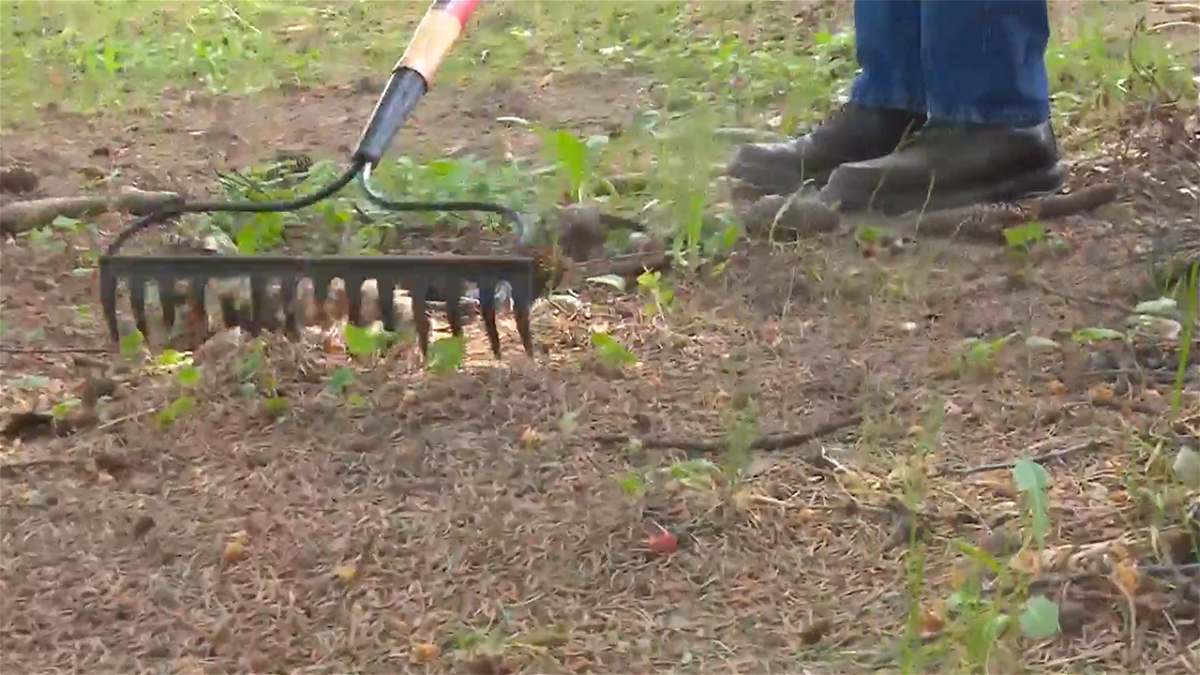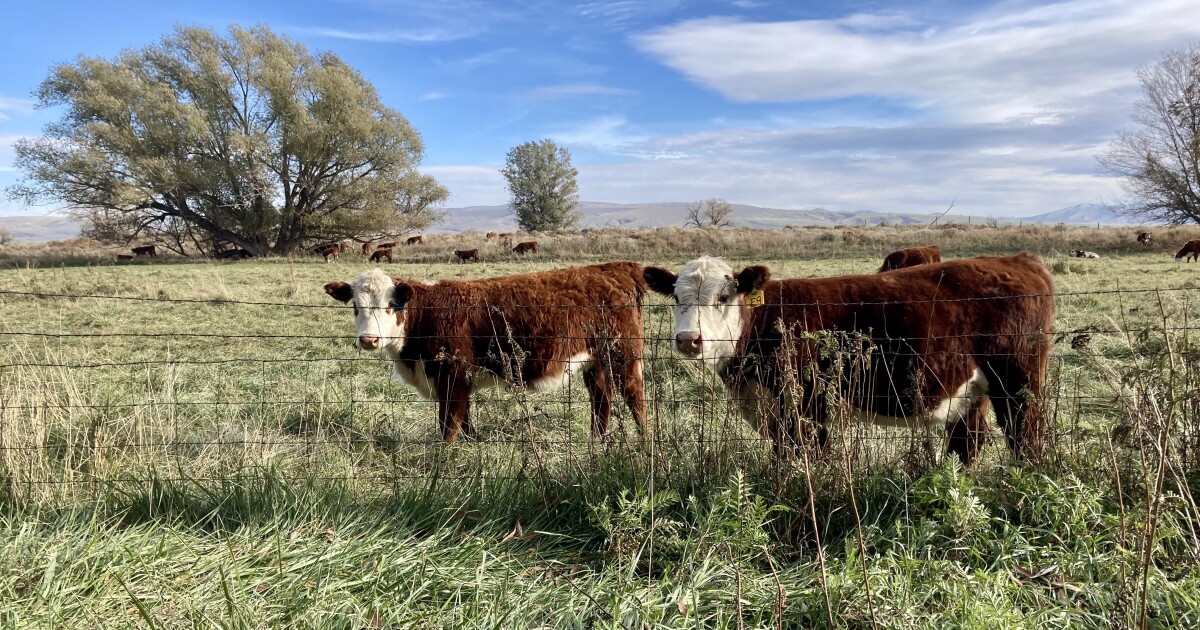Idaho
Idaho Falls' Clean and Green coming in May – Local News 8

IDAHO FALLS, Idaho (KIFI) – If you need some help with your spring cleaning, the City of Idaho Falls is gearing up.
Sanitation Division staff will be available the first four weekends in May at different locations in Idaho Falls to help collect and dispose of unwanted items. This includes household solid waste, brush, construction waste and bulk items.
“This service provides residents with the option to simply toss most of their unwanted items,” Idaho Falls Sanitation Superintendent Jordan Rechenmacher said. “We know spring cleaning can be a chore, so our sanitation staff will lend a hand to our residents by helping them sort out waste items appropriately while offering the convenience of a one-stop drop location.”
During the Clean and Green event, unwanted items will be collected between 9 a.m. and 6 p.m. at the following locations:
- May 2-4, Parks and Recreation maintenance building on Old Butte Road near Clarence Drive
- May 9-11, Russ Freeman Park at the glass recycling bin near Fremont Avenue and Micro Street
- May 16-18, Mel Erickson Sunnyside Park
- May 23-25, intersection of Bennett Avenue & Waid Street
Certain types of waste, such as metal, hazardous waste, tires, or large appliances, are required to be disposed of differently. Idaho Falls Sanitation staff are unable to accept these limited items; however, appropriate disposal locations are listed below.
HOUSEHOLD HAZARDOUS WASTE
The Bonneville County Transfer Station, located at 2455 Hemmert Avenue, will collect and safely dispose of household hazardous waste on May 11 and Sept 14. Accepted items include paint thinner, batteries, fertilizer, fuels, and antifreeze.
DEMOLITION MATERIAL
All demolition material must be disposed of at the Bonneville County Hatch Pit.

Idaho
Man dies after head-on collision near Fruitland – East Idaho News

The following is a news release from Idaho State Police.
Idaho State Police are investigating fatality crash that occurred on Monday at approximately 10:04 a.m. on US95 at milepost 63 in Payette County.
A 2006 Dodge Durango, driven by a 55-year-old male from Caldwell, was traveling northbound when it was driven left of center and collided with a southbound 2022 Ford Maverick. The 2022 Ford Maverick was driven by a 53-year-old male.
The driver of the Durango was transported via air ambulance to a local hospital. The driver of the Ford was transported via ground ambulance to a local hospital and succumbed to his injuries.
The road was blocked for approximately two hours to allow emergency personnel to assist those involved and clear the scene.
This incident remains under investigation by the Idaho State Police.
=htmlentities(get_the_title())?>%0D%0A%0D%0A=get_permalink()?>%0D%0A%0D%0A=htmlentities(‘For more stories like this one, be sure to visit https://www.eastidahonews.com/ for all of the latest news, community events and more.’)?>&subject=Check%20out%20this%20story%20from%20EastIdahoNews” class=”fa-stack jDialog”>
Idaho
Six Idaho dairy farms have the avian flu. Here’s what you need to know

The Idaho State Department of Agriculture confirmed on Friday avian flu had been detected in a dairy operation for the first time in Minidoka County.
Last week, two farms in Jerome County also tested positive. The first three cases were detected in early April in Cassia County after a farm there received cows from an affected dairy in Texas.
State Veterinarian Dr. Scott Leibsle said about 10 to 20% of cows in affected facilities have tested positive and the economic impact to farmers has been significant.
“What you’re seeing is, is a drop in milk production and a drop in feed intake for about that period of time. And then once the symptoms resolve and once the cattle recover, for the most part they’re able to return to production,” Dr. Leibsle said.
He said while a large number of cattle have gotten sick, few cases have been fatal and most recover in 10 to 15 days. Poultry cases, however, are lethal and present a greater economic loss.
“As long as there are birds interacting with livestock, there will be a risk that dairy cattle could potentially acquire the virus,” Dr. Leibsle added.
There are no vaccines yet for cattle, so it is recommended farmers focus on prevention and clean equipment before handling livestock to slow the spread of this disease. While the effects of consuming raw milk are still unknown, pasteurized milk is safe to drink.
Idaho
The types of solar viewing telescopes at the College of Southern Idaho

TWIN FALLS, Idaho (KMVT/KSVT) —There are a few times in your life that people will encourage you to look at the sun. Well, starting Wednesday, May 29 that’s exactly what the Centennial Observatory will be doing as they break out the solar viewing telescopes. Now, you may be wondering what makes a solar telescope different from a standard telescope. The College of Southern Idaho has three types of solar telescopes that are available to them. The first type is a model called a “folded refractor” it has the unique feature of being the only telescope that you don’t look directly through.
“Your normal telescope you’d think of having as having a lens in the front, a lens on the back. This one has both of those, but in between it has mirrors that allow it to kind of fold up,” Observatory Coordinator at the Centennial Observatory Chris Anderson said. Without the traditional lens to look through the image is instead projected onto a piece of paper set within the telescope and this makes it better for larger groups. “There was a company back East that made these specifically for classrooms and they’ve continued to make them ever since,” Mr. Anderson explained.
The second model they have available to them is a traditional telescope, but adjusted with a specialized filter that is added onto it making it possible to view both the sun and the stars when needed. “We have a white light solar filter in it right now and a white light filter just dims the sun way, way down and lets you see what’s going on, on the surface,” Mr. Anderson explained. As of right now, the sun has been fairly active, but the peak of our current solar cycle is expected to hit within the next year or two and a half years.
The third model that they have at their disposal is also the most advanced, it’s called a “Hydrogen Alpha Telescope”, and it blocks out all color except for a specific shade of red that is emitted from the sun called the “Chromosphere”.
“If you’re used to thinking about what you see during a total solar eclipse. So, this little red thing’s poking out from around the edge of the sun. That’s the chromosphere,” Mr. Anderson explained. When looking through the telescope you see a black dot with a grainy, almost oatmeal-like texture that is the sun, and it’s all thanks to the specialized filters that are built into the telescope itself, but that’s not the only cool thing about it. “It is a computer-controlled telescope. It does track the sun automatically, so I don’t have to work about it keeping up,” Mr. Anderson said.
Now, while the sun is extremely active you may want to get in on sun spots, Chris Anderson implores everyone to come down and visit rather than trying to see the sun on your own.
“If you don’t have the proper equipment, don’t try to look to look at the sun with a telescope. That’s an incredibly dangerous thing to do. What a lot of people don’t realize is that it’s not just about whether you’re feeling discomfort. There are ways to filter the sun down in a way that you don’t feel any discomfort, but you’re still doing damage,” Mr. Anderson said.
Even with powerful welder’s glass unless it is a number 14 glass or dark you can still permanently damage your eyes. It is simply safer to not take the risk, rather visit Centennial Observatory on one of the many solar viewing days that will be open to the public. The sun viewing days are every Wednesday following Memorial Day until Labor Day from 1:30 to 3:30 P.M.
Copyright 2024 KMVT. All rights reserved.
-

 News1 week ago
News1 week agoSkeletal remains found almost 40 years ago identified as woman who disappeared in 1968
-

 Movie Reviews1 week ago
Movie Reviews1 week ago“Kingdom of the Planet of the Apes”: Disney's New Kingdom is Far From Magical (Movie Review)
-

 World1 week ago
World1 week agoIndia Lok Sabha election 2024 Phase 4: Who votes and what’s at stake?
-

 World1 week ago
World1 week agoUkraine’s military chief admits ‘difficult situation’ in Kharkiv region
-

 World1 week ago
World1 week agoCatalans vote in crucial regional election for the separatist movement
-

 Politics1 week ago
Politics1 week agoNorth Dakota gov, former presidential candidate Doug Burgum front and center at Trump New Jersey rally
-

 News1 week ago
News1 week agoTrump, Reciting Songs And Praising Cannibals, Draws Yawns And Raises Eyebrows
-

 Movie Reviews1 week ago
Movie Reviews1 week agoAavesham Movie Review



/cdn.vox-cdn.com/uploads/chorus_asset/file/25457864/Wall_Outlet_H2_EU02_05.jpg)










